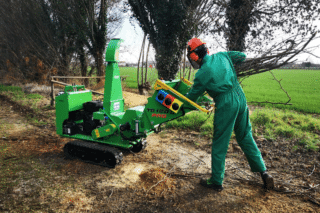Dispensers that tell you they need refilling, electronic ink that monitors your medicine and tags that send product information to your phone – the world of packaging just gets smarter.
Andrew Manly, Communications Director at the Active and Intelligent Packaging Industry Association (AIPIA) says 2015 has been something of a breakthrough year for some smart packaging products.
Traceability is the obvious area to have seen fast growth – pharmaceutical products now must be traceable in all EU and USA markets as well as several others. In addition, inventory management is making big inroads: the apparel sector in particular is adopting radio frequency identification (RFID) technologies to ensure better stock control.
For AIPIA, even if cost is always a factor, economies of scale and new techniques to produce printed electronics faster and cheaper, mean some technologies offer very attractive solutions to certain long standing issues, such as detecting fake products.
Active vs. Intelligent Packaging
Mr Manley suggests there are two distinct areas within the sector – “active” and “intelligent.”
Active products confront food waste issues: anti-microbial, gas scavenging, temperature and condition monitoring, and shelf-life extension. Intelligent packaging products are employed for traceability, anti-counterfeiting, consumer engagement, mobile commerce and the Internet of Things (IoT). The trouble starts when you try to put each of these in a separate box, as many A&IP technologies are used in combination to achieve the desired effect.
One exciting active product with implications across many sectors, including cosmetics and personal care, he suggests, is PhutureMed. Produced by Palladio Group and E Ink Holdings, it incorporates features to monitor the quality of medicines and improve the adherence of patients to prescribed drug therapies.
It has an integrated E-ink display and sensors to monitor the ambient conditions and show the patient or customer if any events occur outside the required handling conditions, even if the batteries are completely drained.
Smart Label
Many recent breakthroughs are in intelligent labelling. Norway-based Thinfilm Electronics has rolled out its OpenSense smart tag technology in association with the EVRYTNG software platform. Appearing on Diageo’s premium Blue Label whisky, for example, it has a Near Field Communication (NFC) tag, which can act as an anti-counterfeit measure and tamper-evident device, and engage consumers with marketing messages and product information.
And summer 2015 saw Avery Dennison bring its DirectLink label technology to Mineral Fusion cosmetics products in the US. Mary Greenwood, Director of New Technology and Business Development, at Avery Dennison Materials Group, says:
When consumers tap an NFC-enabled smartphone to Mineral Fusion’s point of sale displays, DirectLink instantly connects them to a behind-the-scenes video introducing its new cosmetics line backstage at a fashion show. The video explains the ingredients in its new products, describes product benefits and offers application tips.
Small Format RFID
Gary Burns, CEO of US-based eAgile Inc says interest in RFID will continue to grow. The corporation’s first generation MicroWing inlay was developed as a response to the healthcare market’s desire for a small format RFID.
It provides item level visibility to pharmaceuticals to track usage, expiration dates and inventory, and to manage the optimal use of high value perishable medications and laboratory specimens. Its small size also lends itself well to cosmetics packaging.

Also with applications in cosmetics and healthcare is UK-headquartered Timestrip’s time monitoring label. Here a tinted liquid made from food-grade oils and non-toxic colourants is irreversibly triggered by the user and moves through a viewing window at a pre-calibrated rate to show how long a product has been open or in use, explains Founding Director Reuben Isbitsky.
No electronics are involved. It is such a simple technology – and what is exciting is that it has a low price point and all sorts of applications, from reminding you when to replace your toothbrush to when to change a water filter.
Timestrip Plus offers a variation on the technology, indicating the amount of time a product has been above or below a threshold temperature, making it ideal for packaging pharmaceuticals and for transporting and storing of blood.
Aiming High
A more visible smart packaging concept is the new ClickStick deodorant. Developed by former Princeton PhD students, Gilad Arwatz and Carla Bahn, this not only dispenses a personalised, pre-set quantity of the product but also tells the consumer when it is time to refill, explains Mr Arwatz:
The dispenser is controlled by a microprocessor, which connects to an online app.

The app tracks the usage and tells when the deo needs refill. For Andrew Manly:.
We are constantly amazed at what is being developed and brought to market. Take the Bump Mark Condition Monitor, for example, a simple label containing a gelatine, which degrades at the same rate as the protein inside the pack (typically meat or fish) and reveals a bumpy plastic substrate – if you feel the bumps, the food inside is unfit for consumption. It is simple, cheap and effective – and that is what smart packaging is all about!













